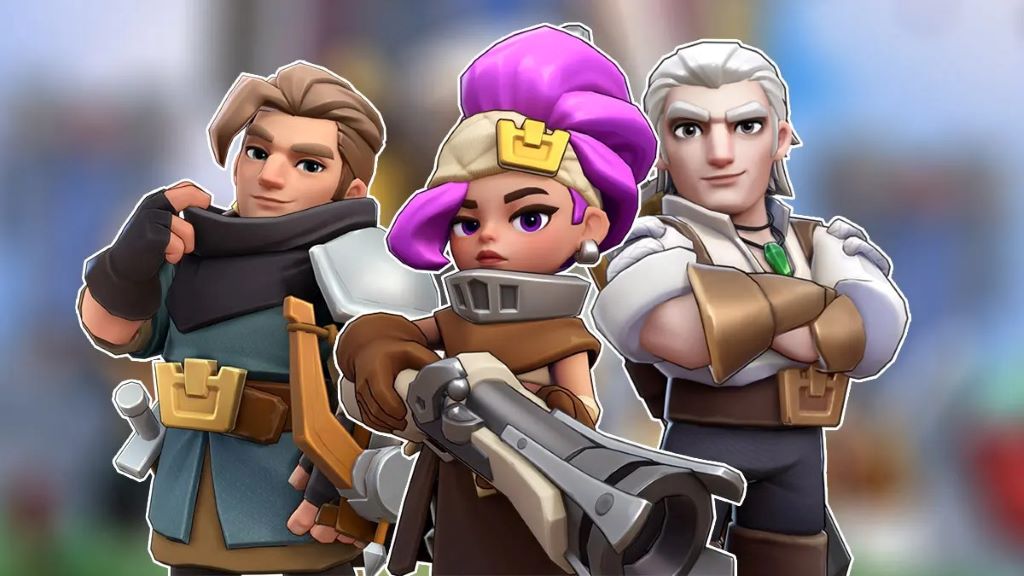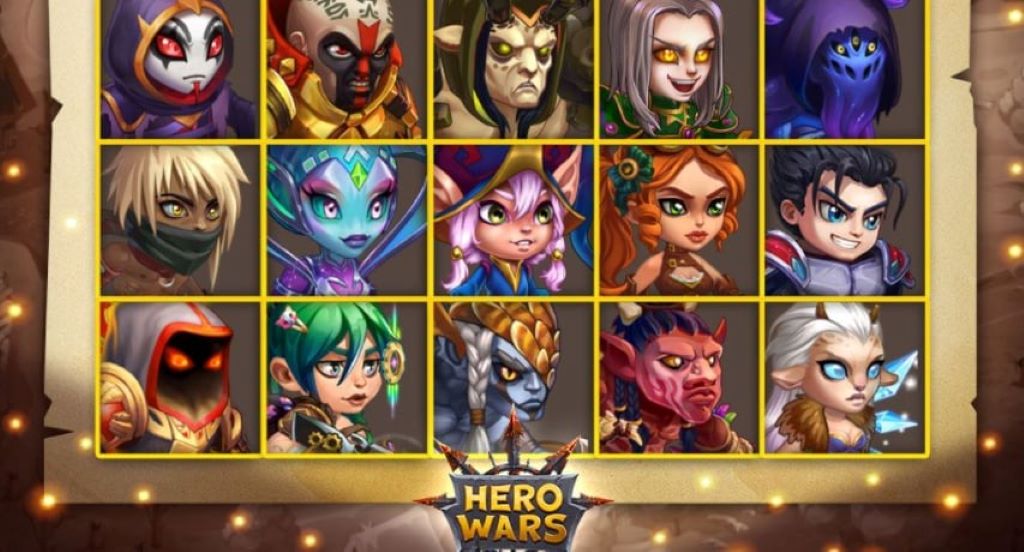Kingshot Hero Skill Analysis Framework for Accurate Ranking
Mobile gaming enthusiasts seeking competitive advantage in Kingshot understand that hero selection dramatically impacts victory rates. Strategic team composition begins with comprehensive character evaluation, and players increasingly turn to reliable resources for guidance. Games Platform Hub provides extensive game analysis, helping players make informed decisions about character investments and battlefield strategies.
Understanding hero capabilities requires systematic assessment beyond surface-level statistics. Players must evaluate multiple performance indicators, including damage output, survivability, crowd control potential, and team synergy. This analytical approach separates casual players from competitive veterans who consistently achieve higher rankings.
The kingshot hero tier system offers structured evaluation frameworks that simplify complex character comparisons. However, raw tier placement tells only part of the story. Successful players combine tier awareness with detailed skill analysis to maximize their competitive potential across different game modes and team compositions.
Core Evaluation Metrics for Hero Assessment
Damage calculation forms the foundation of hero evaluation in Kingshot. Players should examine base attack statistics alongside scaling coefficients that determine late-game potential. Characters with higher scaling ratios become increasingly powerful as matches progress, making them valuable investments for extended gameplay sessions.
Survivability metrics include health pools, armor ratings, and evasion capabilities. Additionally, self-healing abilities and shield generation significantly impact a hero’s effective durability. Characters combining high survivability with reasonable damage output often dominate competitive environments because they maintain consistent pressure without frequent elimination.
Crowd control capabilities determine a hero’s utility beyond raw damage numbers. Stun duration, slow percentages, and displacement abilities create opportunities for team coordination. Therefore, heroes offering reliable crowd control maintain relevance even when their damage statistics appear moderate compared to pure damage dealers.
Skill Synergy and Ability Rotation Analysis
Individual skill strength matters less than cohesive ability combinations. Players should identify natural skill chains that maximize damage windows while minimizing vulnerability periods. Heroes with complementary ability cooldowns allow continuous pressure application without dangerous downtime exposure.
Ultimate ability impact often defines hero tier placement in competitive analysis. Game-changing ultimates that swing team fights warrant higher rankings regardless of basic ability limitations. However, ultimate cooldown length and resource requirements must factor into overall evaluation because inaccessible power provides little practical value.
Passive abilities frequently receive insufficient attention during hero evaluation. Permanent stat bonuses, trigger-based effects, and conditional buffs accumulate substantial value over match duration. Characters with powerful passive effects often outperform flashier alternatives in extended engagements.
Role-Specific Performance Indicators
Tank heroes require specialized evaluation criteria focused on damage mitigation and frontline presence. Effective tanks create space for damage dealers while absorbing enemy resources. Additionally, peel potential and engagement initiation capabilities separate elite tanks from mediocre alternatives.
Damage dealer assessment prioritizes consistent output over burst potential in most situations. Sustained damage heroes contribute throughout entire engagements, whereas burst specialists depend on perfect execution timing. Therefore, reliability often outweighs theoretical maximum damage in practical competitive scenarios.
Support heroes demand nuanced evaluation considering healing output, buff strength, and defensive utility. Strong support characters enable aggressive team strategies while providing safety nets for positioning mistakes. Consequently, support tier rankings should emphasize team enhancement rather than individual combat prowess.
Situational Strength and Counter-Pick Dynamics
Meta awareness influences hero effectiveness more than absolute power levels. Characters dominating current strategies naturally rise in tier rankings, while their natural counters gain increased value. Players monitoring meta shifts identify undervalued heroes before broader community recognition.
Counter-pick relationships create complex tier interdependencies that simple rankings cannot capture. Heroes with numerous hard counters face consistency problems regardless of raw power. Conversely, characters with few exploitable weaknesses maintain stable performance across diverse matchups.
Map design and objective layouts favor different hero archetypes. Mobile characters excel on maps with multiple engagement zones, while zone control specialists dominate confined objective areas. Therefore, comprehensive tier lists should account for map-specific performance variations.
Skill Floor and Skill Ceiling Considerations
Accessibility influences practical hero value for different player segments. Characters with simple mechanics and forgiving execution requirements provide consistent returns for average players. However, mechanical mastery unlocks additional power tiers for challenging heroes with complex ability interactions.
Learning curve steepness affects recommended hero pools for improvement-focused players. Heroes requiring extensive practice before competency may receive lower beginner-tier rankings despite high competitive potential. Additionally, plateau points where additional practice yields diminishing returns help players optimize training investments.
Execution consistency under pressure separates theoretical potential from practical results. Heroes requiring precise timing or positioning become less reliable during intense competitive moments. Consequently, stress-resistant hero designs often overperform their apparent power levels in actual ranked environments.
Team Composition Integration
Synergy multipliers elevate mediocre heroes to competitive viability within specific compositions. Characters enabling powerful team strategies gain value beyond individual capabilities. Players should evaluate heroes not just independently but within their preferred team archetypes.
Drafting flexibility provides strategic advantages during competitive selection phases. Heroes fitting multiple roles or team compositions offer valuable versatility. Therefore, flex-pick characters often warrant higher tier placement despite lacking specialized dominance.
Communication requirements affect hero viability across different play environments. Characters dependent on precise team coordination excel in organized play but struggle in solo queue scenarios. Ranking systems should differentiate between coordinated team play and independent queue performance.
Progression Systems and Investment Efficiency
Resource requirements influence practical hero accessibility for free-to-play players. Characters demanding extensive upgrades before viability present higher barriers to entry. Additionally, material scarcity and time-gated progression systems affect which heroes players can realistically develop.
Scaling curves determine whether heroes remain relevant throughout player progression. Characters dominating early gameplay but falling behind at higher levels trap players in suboptimal investments. Conversely, heroes maintaining competitive strength across all progression stages offer superior long-term value.
Duplicate acquisition systems and awakening mechanics create tier volatility based on investment levels. Base-form hero rankings differ substantially from fully upgraded performance tiers. Players should consult progression-specific tier lists matching their current development stage.
Advanced Statistical Analysis Methods
Win rate data provides objective performance measurement when sample sizes reach statistical significance. However, raw win rates require context including pick rates, player skill distribution, and match length considerations. Therefore, multiple statistical metrics create more accurate hero evaluation.
Ban rates in competitive modes reveal community perception of hero strength. Frequently banned characters either dominate current strategies or lack reliable counterplay options. Nevertheless, ban rate analysis should distinguish between actual power and perceived frustration factors.
Damage contribution metrics, kill participation rates, and objective control statistics offer granular performance insights. Heroes excelling across multiple statistical categories demonstrate genuine strength rather than niche specialization. Consequently, well-rounded statistical profiles indicate reliable competitive value.
Conclusion
Accurate hero ranking requires systematic analysis combining multiple evaluation dimensions beyond simple power measurements. Players who master skill assessment frameworks, understand situational strengths, and recognize team composition dynamics gain significant competitive advantages. The kingshot hero tier framework provides structured guidance, but individual playstyle preferences and mechanical strengths should ultimately determine personal hero selections. Continuous meta monitoring and willingness to adapt hero pools separate improving players from stagnant competitors in dynamic competitive environments.
Frequently Asked Questions
How often do kingshot hero tier rankings change?
Hero tier rankings typically shift every major patch or balance update, usually occurring monthly or bi-monthly. Meta evolution happens gradually between updates as players discover new strategies. Therefore, checking tier lists after each significant game update ensures current information.
Should beginners follow tier lists strictly when selecting heroes?
New players benefit more from mastering mechanically simple heroes than chasing top-tier picks. Comfort and consistency outweigh raw hero power at beginner skill levels. Additionally, learning fundamental gameplay concepts matters more than optimal character selection during early progression stages.
Do tier lists differ between game modes?
Yes, hero effectiveness varies significantly across different game modes. Characters dominating ranked play may underperform in casual modes with different objective structures. Players should consult mode-specific tier lists matching their preferred gameplay format for accurate guidance.
How important are hero counters compared to tier rankings?
Counter-pick relationships often override general tier placement during actual matches. A mid-tier hero countering enemy team composition provides more value than top-tier picks with unfavorable matchups. Therefore, draft adaptability and counter awareness trump rigid tier list adherence in competitive scenarios.
Can low-tier heroes succeed in high-rank competitive play?
Skilled players occasionally achieve success with lower-tier heroes through exceptional mechanical execution and strategic creativity. However, tier disadvantages compound at higher skill levels where opponents minimize mistakes. While possible, succeeding with low-tier picks requires substantially more effort than using competitively viable alternatives.
Related Topics:
Unearthing the Thrill: Mastering the Challenges of Rise of the Tomb Raider
Pokémon Violet Review: A Deep Dive into Gameplay, Features, and Fun














Post Comment